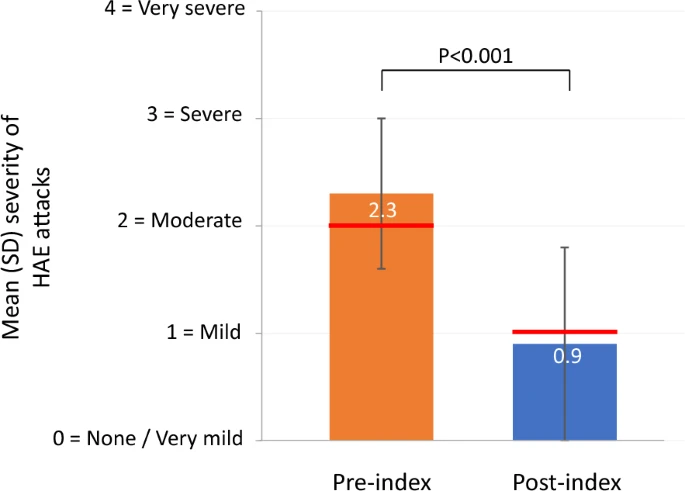- Research
- Open access
Abstract
Background
Real-world data on subcutaneous C1INH (C1INH[SC]) usage and patient-level impacts on hereditary angioedema (HAE)-related outcomes and quality of life (QoL) are both lacking and challenging to generate using conventional study methodologies. Using a hybrid study design involving patient interviews supplemented by retrospective medical chart data review, we conducted a real-world assessment of the impact of C1INH(SC) prophylaxis on HAE attack patterns, QoL, and on-demand medication use.
Methods
The study was conducted at seven US sites and included 36 adults with HAE who had been treated with C1INH(SC) long-term prophylaxis following ≥ 12 months of on-demand management only. Patients underwent 30-min interviews, facilitated and analyzed by a trained qualitative research specialist.
Medical records were reviewed for 12 months before (pre-index) and after (post-index) initiation of C1INH(SC). Using interview data with descriptive terms converted to numerical values, we compared pre- versus post-index attack frequency, severity, and rescue medication usage.Results
Mean (SD) annualized attack frequency per patient decreased 82.0%, from 38.8 (38.8) attacks/year pre-index to 7.0 (15.3) attacks/year (P < 0.001); the median number of attacks decreased by 97.0% (30 pre-index to 1 post-index). For 20 patients, the annualized attack rate after starting C1INH(SC) prophylaxis was ≤ 1 attack/year; 12 of these patients reported 0 attacks. Mean (SD) attack severity (scale: 0 = none/mild to 4 = very severe) decreased from 2.3 (0.7) pre-index to 0.9 (0.9) post-index (P < 0.001). Mean/median rescue medication use decreased by 77.2%/96.3%. Improved QoL was narratively described for many domains.
Conclusions
These real-world findings indicate that long-term prophylaxis with C1INH(SC) markedly improves important factors that contribute to the goal of achieving total disease control and normalization of patients’ lives, including fewer and less severe attacks, less rescue medication usage, and improved QoL.


No comments:
Post a Comment